Branding has become more important than ever in an online environment ripe with competition. While offers and promotions can contribute to temporary bottom line success, only true brand recognition and recall can help sustain a business over time as it attempts to grow.
When trying to assess brand awareness, deciding on your most important indicators will allow you to gauge progress with precision and create new goals. Only through specific goal-setting and performance evaluation can effective action be taken. To help find ways for your brand to determine whether or not branding efforts have truly succeeded, here are the most common methods of measurement:
Surveys
Surveying your market has always been a surefire method of assessing brand awareness. These techniques are limited by sample size and the general qualitative nature of the data, but they are far less mysterious than trying to pick out trends in graphs and charts. Participants can indicate with certainty whether or not they have heard of a brand and what feelings or products they associate with the brand.
Most brands would benefit from combining occasional market surveying with data-driven analytics to find out if and how their branding messages have been received.
Search Engine Queries
One of the most tangible metrics to examine is how search engine users are finding your site. While this method is also largely qualitative, it reveals whether or not the searcher in question was using generic queries or branded ones.
Tools like Google Analytics can indicate the top 2,000 queries that returned your site during a search. Solid, branded queries relating to products or branded messages indicate the strongest connection between audience awareness and information-seeking behaviors. Tracking increases or decreases in these branded search terms can also indicate how marketing efforts have affected awareness.
Social Media Engagement
Social media is rapidly becoming a crucial tool in a brandâs repertoire. Data produced by CRM platform Salesforce.com indicates that 80% of people who follow a brand think of them when considering a product or service solution. Social engagement such as shares, likes, follows and mentions can be measured to see how effective social media efforts are at increasing awareness.
Any changes in engagement could be directly related to the quality of content that your brand provides in social venues. 80% of consumers said that authentic content was the most important factor when deciding to follow someone.
Those who were later disappointed by the content a brand offered could be turned off from the brandâs messages altogether. Of the 63% that said that a brand has let them down at some point, over half said they would be unlikely to engage with the brandâs content again and 23% said they definitely never would. Tracking followers and engagement in general can help brands keep tabs on their content offerings and know whether the messages were helping or hurting their brand.
Reach and Impressions
Reach and impressions are not just important on social media, but also in digital advertising like AdSense. While there is no guarantee that a digital âimpressionâ has left a genuine mental impression on someone, the effectiveness of your targeting and keyword use can be measured by both reach and impression. After all, if no one sees your content or ads, then increasing brand awareness would be almost impossible.
Businesses can track analytics for both social media and digital marketing using tools like Digital Social Retailâs software platform. These tools measure key metrics from defined sources and help crunch the data to find out which component of your ads and social media activity are helping or hurting.
You can also use the platform to manage content and ensure that your branded messages are being spread consistently throughout your target market. Visit our product information page to find out more about how this software can make tracking brand awareness that much easier.









